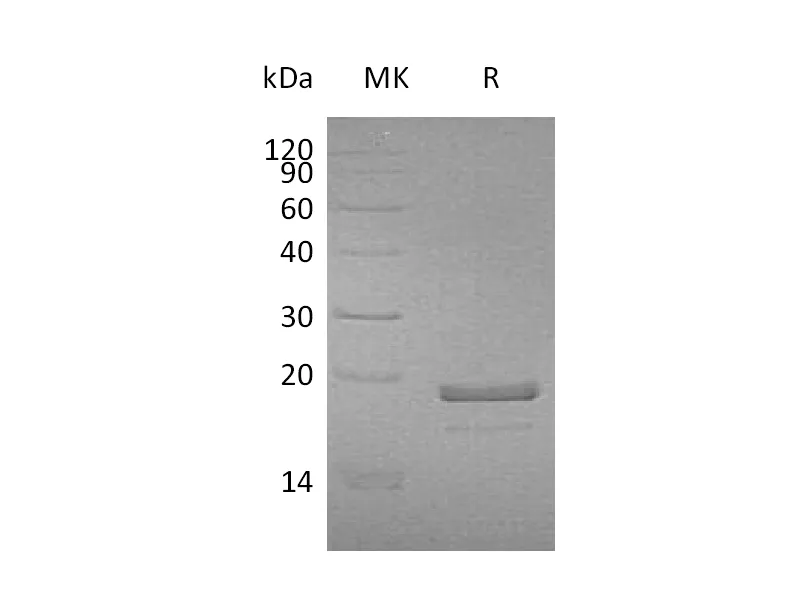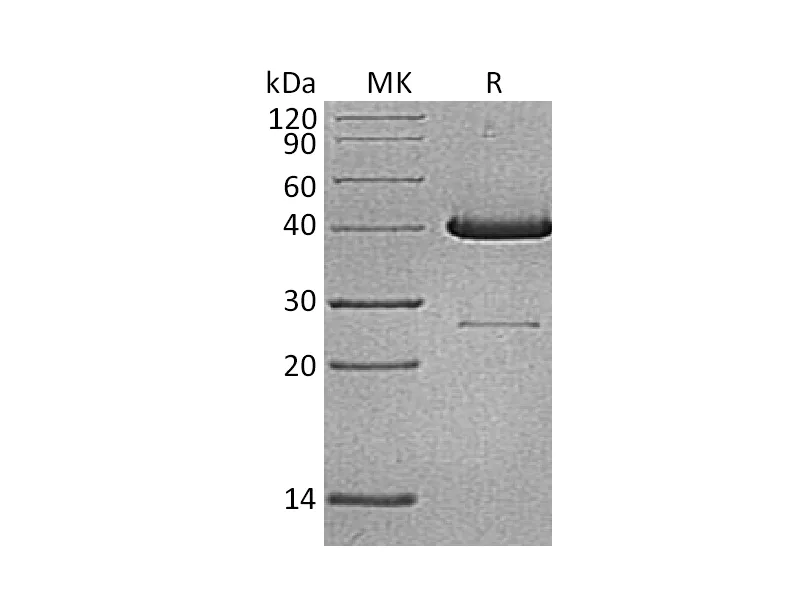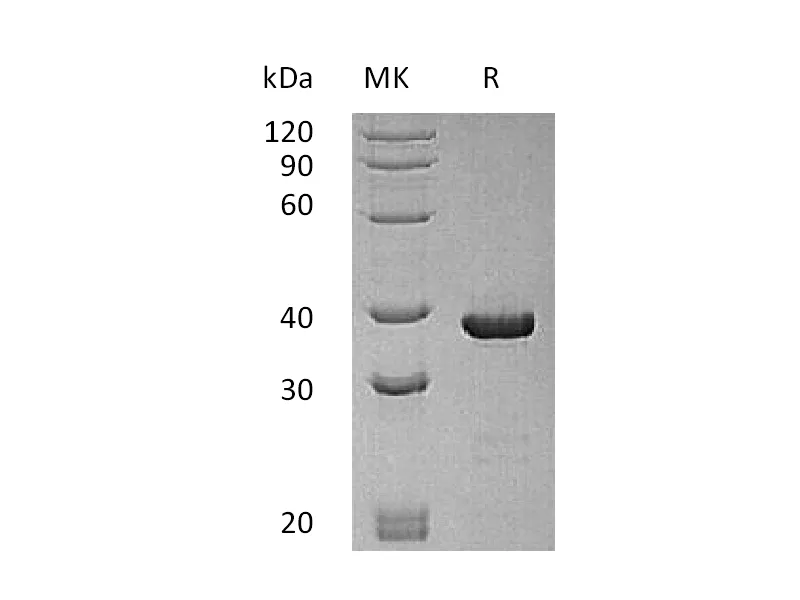| 产品名称 |
Recombinant Mouse SLAMF3 (C-6His) |
| 英文名称 |
SLAMF3/T-lymphocyte Surface Antigen Ly-9/CD229 |
| 纯度 |
Greater than 95% as determined by reducing SDS-PAGE |
| 内毒素 |
<1 EU/µg as determined by LAL test. |
| 蛋白构建 |
Recombinant Mouse T-lymphocyte Surface Antigen Ly-9 is produced by our Mammalian expression system and the target gene encoding Lys48-Phe454 is expressed with a 6His tag at the C-terminus. |
| Accession |
Q4VBG4 |
| 表达宿主 |
Human Cells |
| 种属 |
Mouse |
| 预测分子量 |
47 KDa |
| 制剂 |
Lyophilized from a 0.2 μm filtered solution of PBS, pH 7.4. |
| 运输方式 |
The product is shipped at ambient temperature.Upon receipt, store it immediately at the temperature listed below. |
| 稳定性&储存 |
Store at ≤-70°C, stable for 6 months after receipt.Store at ≤-70°C, stable for 3 months under sterile conditions after opening. Please minimize freeze-thaw cycles. |
| 复溶 |
Always centrifuge tubes before opening.Do not mix by vortex or pipetting.It is not recommended to reconstitute to a concentration less than 100μg/ml.Dissolve the lyophilized protein in distilled water.Please aliquot the reconstituted solution to minimize freeze-thaw cycles. |
| 分子别名 |
| T-lymphocyte surface antigen Ly-9; Cell surface molecule Ly-9; Lymphocyte antigen 9; SLAM family member 3; SLAMF3; Signaling lymphocytic activation molecule 3; CD229; Ly9; Ly-9 |
| 背景介绍 |
| CD229(SLAMF3) is a type I transmembrane glycoprotein in the SLAM subgroup of the CD2 family. Mature mouse CD229 consists of a 406 aa extracellular domain (ECD) with two Ig-like V-set and two Ig-like truncated C2-set domains, a 21 aa transmembrane segment, and a 180 aa cytoplasmic domain with two immunoreceptor tyrosinebased switch motifs ITSMs. Within the first two Ig-like domains that are common to all SLAM proteins, mouse CD229 shares 22%-36% aa sequence identity with mouse 2B4, BLAME, CD2F10,CD84, CRACC, NTBA, and SLAM. CD229 is expressed on T, B, and NK cells, thymocytes and monocytes. Homophilic binding between CD229 molecules is mediated by the N-terminal Ig-like domain. Human and mouse CD229 exhibit crossspecies binding. Antigen stimulation of lymphocytes induces CD229 clustering to sites of T cell-B cell contact. Antibody ligation of CD229 can inhibit T cell activation, but CD229 knockout mice show impaired T cell immune responses, suggesting a potential role for CD229 in T cell activation or costimulation. |
注意事项
本司产品仅用于科研,不用于临床诊断和治疗




